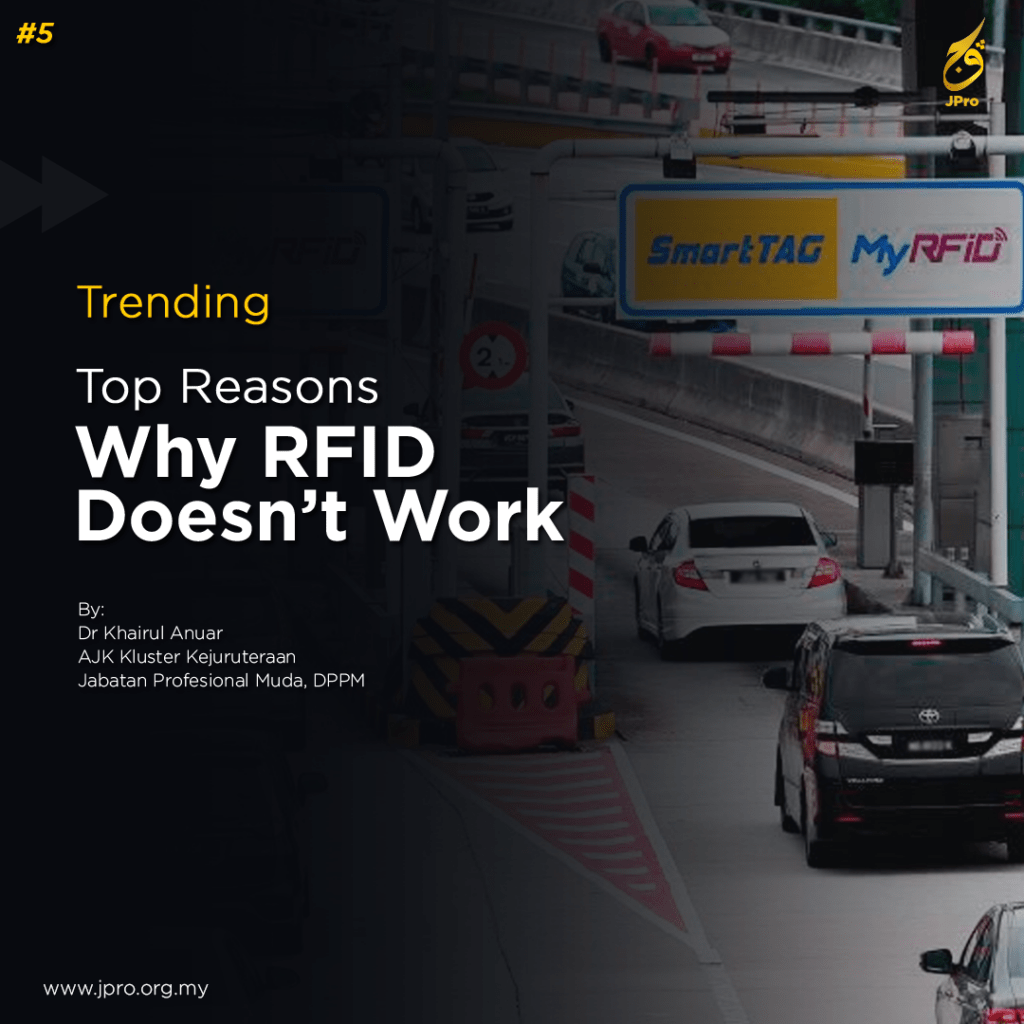TOP REASONS WHY RFID DOESN'T WORK

WHAT IS RFID?
Radio-frequency identification (RFID) is a device that allows us to wirelessly identify objects by collecting data and transmitting it over radio waves. RFID has a wide range of applications in industries, including healthcare, retail, manufacturing, transportation, and others.
RFID tags, antennae, readers, cables, and other components such as multiplexers and support antennas all function together to form the RFID system’s functionality and are required for the technology to function. They work together to produce an effective RFID solution.
RFID systems are incredibly reliable; some businesses achieve 99.9% system reliability on their RFID network; yet, what happens if an RFID system fails? Or perhaps an identifying tag isn’t being read? Failures can result in lost revenue for manufacturers and hazardous dangers especially in transport applications and who is to blame when things go bad? What is the name of the tagging producer? Who makes the reader? What is the role of the network integrator? There are plenty of faults to go around, and let’s face it, the reader and tag are inextricably linked. One can make the other appear to be complete unfunctional.
CAUSES OF FAILURE
These are some of the causes that could lead to RFID’s reading failures which are:
• Reader Sensitivity
• Material Density
• Operating Frequency/Coupling Factor
• Application Requirements/Security Factors
• Reader Quality
• Speed and Movement of Tags
• Tag Density
• Antenna Design
• Mounting Location
• Transponder Sensitivity
• Absorption and Reflection
• Electrical Noise
• Environment
There are probably other factors that can affect an RFID reader’s performance, but these are the most common reasons.
ALTERNATIVE TO RFID
While the RFID system is the most common way for validating entry and departure locations in order to calculate toll rates, there are other options for dealing with unusual circumstances. The automated number plate recognition (ANPR) system, for example, takes a snapshot of incoming automobiles and uses the license plate number to individually identify each one.
However, the challenges to applying the ANPR system are not all vehicles have license plate number that is in good condition (i.e., damaged), clean, and/or not up to regulatory standards (i.e., fancy plates), which may impair the ANPR system’s capacity to identify the license plate number.
IMPROVEMENT FOR BETTER FUTURE
From a professional perspective, whatever issues happening regards the PLUS RFID must be investigated properly. A rigorous testing and post-mortem must be done not only focusing on the Pilot Run but including User Acceptance Testing (UAT) and Parallel Testing as well.
Parallel Testing is a system transition approach in which a new system gradually takes over the functions of an older system while both systems operate at the same time. This conversion occurs when the old system’s technology has become obsolete, necessitating the installation of a new system to replace the old one. After a period of time, when the new system has been proven to perform well, the old system will be fully deleted, leaving users to rely only on the new system.
JPro wholeheartedly supports the PLUS initiative to improve the system and to provide the best value to the people of Malaysia.
Reference
1. RFID: a technical overview and its application to the enterprise. IEEE Computer Society. https://doi.org/10.1109/MITP.2005.69
2. RFID Based Toll Collection System. International Journal of Computer Science and Information Technologies.
3. Antenna Array Synthesis for RFID-Based Electronic Toll Collection. IEEE Transaction of Antennas and Propagation.
Ditulis oleh
Dr Khairul Anuar
Kluster Kejuruteraan,
Jabatan Profesional Muda, JPro
Penulis merupakan ahli Kluster Kejuruteraan dan mempunyai PhD dalam bidang kejuruteraan mekanikal serta sekarang memegang jawatan sebagai seorang pensyarah di salah sebuah universiti awam di Malaysia.
20 Januari 2022
